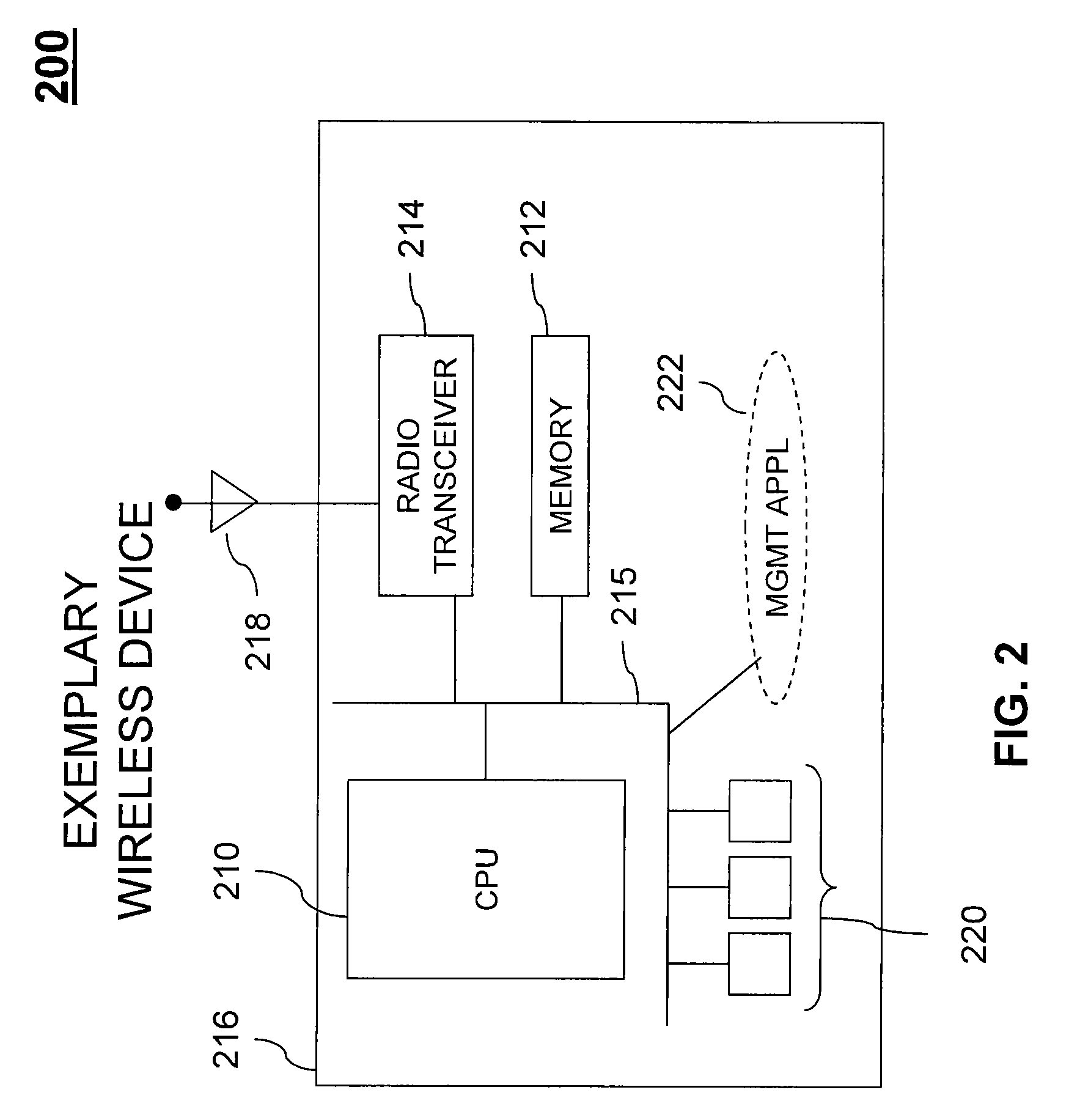Throughput-based rate adaptation for wireless transmissions
a wireless transmission and rate adaptation technology, applied in the field ofwireless frame transmissions, can solve the problems of low transmission rate, inability to provide higher throughput, and inability to adapt to the performance of per-based methods in the presence of interference,
- Summary
- Abstract
- Description
- Claims
- Application Information
AI Technical Summary
Problems solved by technology
Method used
Image
Examples
Embodiment Construction
Introduction
[0024]The present invention is directed to a system and method for throughput-based rate adaptation for wireless transmissions. The following detailed description of the present invention refers to the accompanying drawings that illustrate exemplary embodiments consistent with this invention. Other embodiments are possible, and modifications may be made to the embodiments within the spirit and scope of the invention. Therefore, the detailed description is not meant to limit the invention. Rather, the scope of the invention is defined by the appended claims.
[0025]Wireless communications systems, such as wireless-enabled laptop computers, personal digital assistants (PDAs), portable music players, portable televisions, cell phones, and similar mobile digital devices and mobile analog devices pose multiple challenges for design engineers and users alike.
[0026]Users in a wireless environment are typically mobile, and so may come in and out of range of wireless access points ...
PUM
 Login to View More
Login to View More Abstract
Description
Claims
Application Information
 Login to View More
Login to View More - Generate Ideas
- Intellectual Property
- Life Sciences
- Materials
- Tech Scout
- Unparalleled Data Quality
- Higher Quality Content
- 60% Fewer Hallucinations
Browse by: Latest US Patents, China's latest patents, Technical Efficacy Thesaurus, Application Domain, Technology Topic, Popular Technical Reports.
© 2025 PatSnap. All rights reserved.Legal|Privacy policy|Modern Slavery Act Transparency Statement|Sitemap|About US| Contact US: help@patsnap.com



